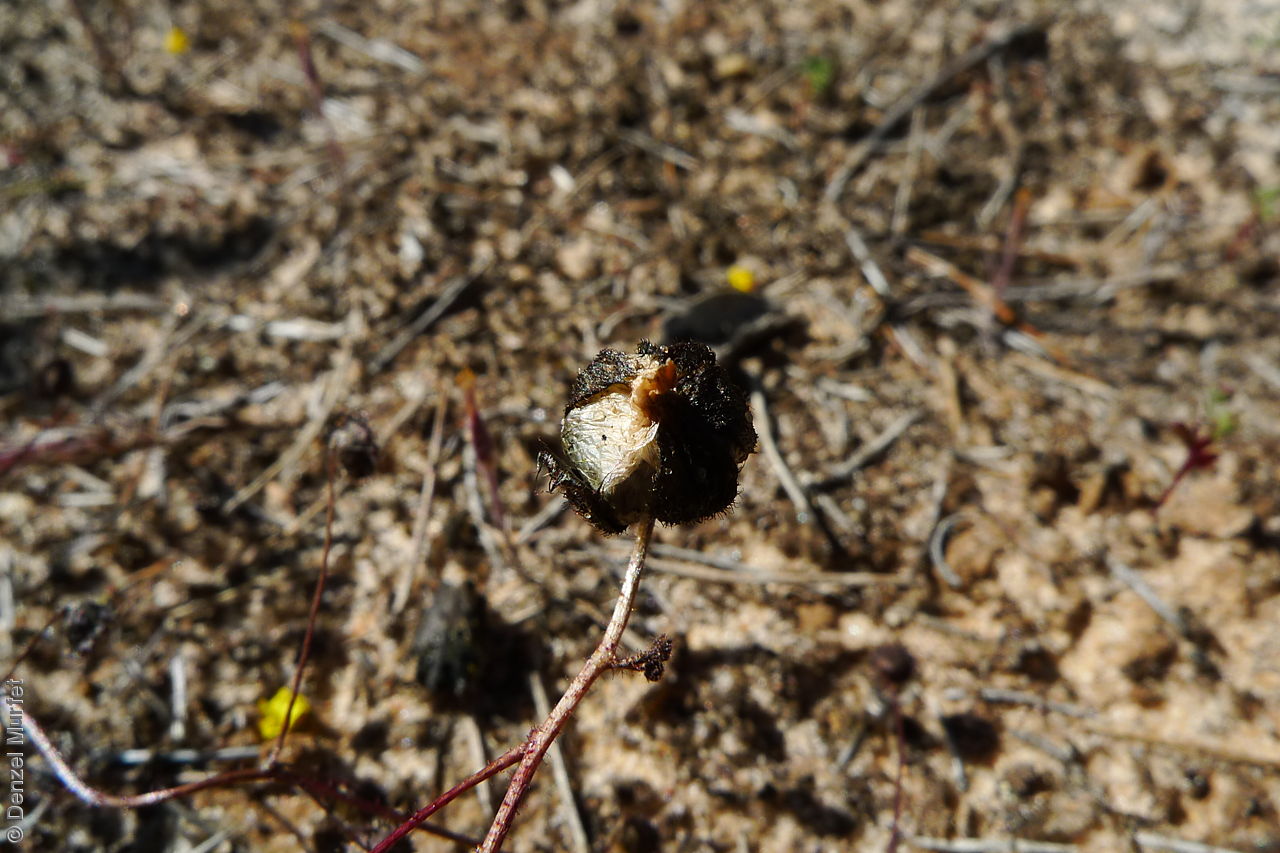















Botanical art
Prior names
Sondera planchonii
Drosera planchonii
Drosera menziesii var. albiflora
Common names
Climbing Sundew
Etymology
Drosera from the Greek 'droseros' meaning dewy; alluding to the glistening of the glandular leaf laminae. Macrantha from the Greek 'macros' meaning large and 'anthos' meaning flower. Planchonii named after Jules Émile Planchon (1823-1888), a French botanist born in Ganges, Hérault.
Distribution and status
Found in the southern part of South Australia, from the Flinders Ranges, Eyre Peninsula to the lower South-east, growing in a wide variety of habitats. Also found in Victoria and Tasmania. Native. Common in South Australia. Uncommon in Tasmania. Common in Victoria.
Herbarium regions: Flinders Ranges, Eyre Peninsula, Northern Lofty, Murray, Yorke Peninsula, Southern Lofty, Kangaroo Island, South Eastern, Green Adelaide
AVH map: SA distribution map (external link)
Plant description
Perennial herb with an erect rhizome arising from a globular tuber with stems to 60 cm long, simple, slender, leafy, trailing, scrambling or climbing. Lower leaves few, reduced and scale-like, alternate, upper leaves paired or in false whorls of 3 or 4, lamina orbicular-peltate, to 7 mm in diameter, deeply concave, inverted. Inflorescence a terminal raceme or panicle with 2 to several-flowers. Sepals 5, blackish, to 8 mm long, broad-elliptical or ovate, pilose, the hairs appressed, septate, glandular, margins ciliate below. Petals 5, white or pale pink, to 10 mm long, obovate. Flowering between July and October. Fruits are brown globose capsule to 8 mm diameter, nodding, enclosed in persistent sepals. Seeds are black dumbbell-shape seed to 3 mm long and 0.5 mm wide.
Seed collection and propagation
Collect seeds between September and November. Collect mature capsules, those that are fat, hard, turning brown and contain black seeds inside. Place the capsules in a tray and leave to dry for one to two weeks. Then rub the capsules gently by hand to dislodge the seeds. Use a sieve to separate the unwanted material. Store the seeds with a desiccant such as dried silica beads or dry rice, in an air tight container in a cool and dry place. From one collection, the seed viability was high, at 100%.
| Location | No. of seeds (weight grams) | Number of plants | Date collected | Collection number Collection location | Date stored | % Viability | Storage temperature |
|---|---|---|---|---|---|---|---|
| BGA MSB | 11,000 (1.02 g) 11,000 (1.02 g) | 100+ | 16-Oct-2005 | DJD146 Southern Lofty | 1-Aug-2006 | 100% | -18°C |
Number of plants: This is the number of plants from which the seeds were collected.
Collection location: The Herbarium of South Australia's region name.
% Viability: Percentage of filled healthy seeds determined by a cut test or x-ray.